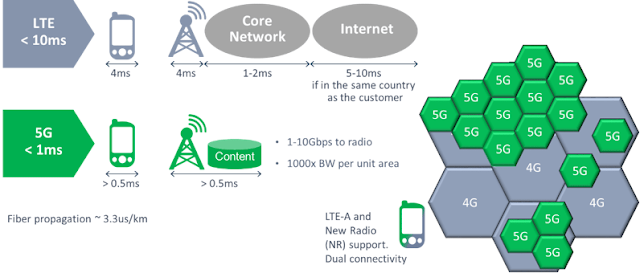Latency in 5G
The reduced latency paves the way for advancements in areas like autonomous vehicles, telemedicine, and virtual reality, where instantaneous data exchange is paramount. As the 5G infrastructure continues to expand, its low-latency feature becomes a cornerstone for developing futuristic applications and services, ensuring that users can enjoy faster and more reliable wireless communications.
Latency in 5G typically ranges from 1 to 10 milliseconds. This improved response time enhances user experiences.
Challenges Of Latency In 5g
5G technology heralds a new era of connection speeds and reliability. Users expect to download, stream, and browse with little to no delay. Yet, achieving this seamless experience is not without its hurdles. Latency is a critical factor in how fast and responsive 5G networks can be.
Defining Latency In The Context Of 5g
Latency refers to the time a data packet takes to travel from one point to another. In 5G, the goal is near-instantaneous communication. Consider the journey from clicking a link to loading a webpage; low latency makes this almost immediate.
- Measuring Latency: It's usually counted in milliseconds (ms).
- Ideal 5G Latency: Under 5ms is the target for optimal experience.
- Impact of High Latency: Can lead to slow response times.
Current Challenges Imposed By High Latency
Despite the promise of 5G, users still face issues due to high latency in certain conditions. Challenges include:
| Challenge | Impact |
|---|---|
| Network congestion | Delays in data delivery |
| Distance from cell towers | Increased travel time for data |
| Outdated infrastructure | Hindrance to achieving low latency |
Overcoming these challenges is imperative to unleash the full power of 5G networks. Providers continue to upgrade equipment, optimize network distribution, and establish new infrastructure to assure users gain the low-latency benefits of 5G.
Implications Of High Latency On User Experience
The speed at which technology responds is crucial in our fast-paced world. High latency, or delay, in 5G networks adversely affects how we interact with the digital realm. When networks lag, the user experience deteriorates, causing frustration and limiting the potential of cutting-edge technologies.
Impact On Streaming Services And Real-time Gaming
Streaming content and playing online games demand uninterrupted, real-time data transfer. Latency above certain thresholds can cause:
- Buffering or lag in video streaming, disrupting your viewing experience.
- Delays and lag spikes in online gaming, leading to a competitive disadvantage.
Seamless streaming and gaming rely heavily on low-latency networks, and any latency hiccups can be deal-breakers for users seeking instantaneous feedback and interaction.
Consequences For Iot And Smart City Applications
Internet of Things (IoT) devices and smart city infrastructures integrate to perform efficiently. High latency can lead to:
| Area Impacted | Effects of High Latency |
|---|---|
| Emergency Services | Delays in critical response times |
| Traffic Management | Non-optimal traffic flow and increased congestion |
| Utility Services | Slower reaction to power outages and system failures |
For smart applications, where decisions often need to be made in milliseconds, high latency can compromise functionality and the overall efficacy of services.
Innovative Solutions To Reduce 5g Latency
Latency is a big deal in the 5G world. It's the time it takes for data to travel. Less time means snappier internet. Imagine clicking a link and the page loads instantly. That's what 5G promises, and experts are working hard to make it happen. Let's explore how they're cutting down delay times in 5G networks.
Advances In Network Slicing For Enhanced Response Times
Network slicing is a smart way to manage a 5G network. Think of a pizza, with each slice serving a different purpose. This method divides 5G networks into unique slices. Each slice can handle its own type of traffic.
- Emergency Services: One slice for super quick response.
- Self-driving Cars: Another slice for steady, reliable signals.
Each slice can be tweaked to be faster. This makes the whole network more responsive and quick.
Edge Computing: Bringing Data Closer To Users
Edge computing is like a shortcut. Rather than sending data on a long trip, it keeps things close to users. This means data travels less. It's like having a super-fast mini-computer right in your backyard.
| Edge Computing Impact | |
|---|---|
| Speed | Faster data handling |
| Bandwidth | More space for data |
Devices talk to these mini-computers instead of a faraway server. This cuts down the travel time for data and lowers latency. So, actions become almost instant.
The Future Of Low-latency 5g Networks
Imagine a world where your online experience is almost instant. Low-latency 5G networks are making this a reality. With 5G, videos start faster, games react in real-time, and applications run smoothly. This next wave in mobile technology brings speeds akin to fiber optics directly to your device. Let's explore how 5G is shaping our digital tomorrow.
Predicting The Next-generation Low-latency Applications
The potential low-latency applications are exciting:
- Autonomous Vehicles: Instant communication for safer, driverless cars.
- Telemedicine: Surgeons perform operations from miles away with robotic precision.
- Virtual Reality: Immersive environments with no lag.
5g Evolution: Ongoing Research And Developments
Researchers are pushing 5G's limits. They focus on:
- Enhancing 5G infrastructure for wider coverage.
- Developing new frequency bands for better performance.
- Creating energy-efficient protocols for sustainable growth.
These advancements promise even lower latency and higher reliability for everyone.
As we navigate the digital landscape, understanding latency in 5G becomes vital. This revolutionary technology promises swift, seamless connectivity. Embracing its potential transforms our approach to communication and data transfer. The journey to near-zero latency is underway, charting the course for a hyper-connected future.





